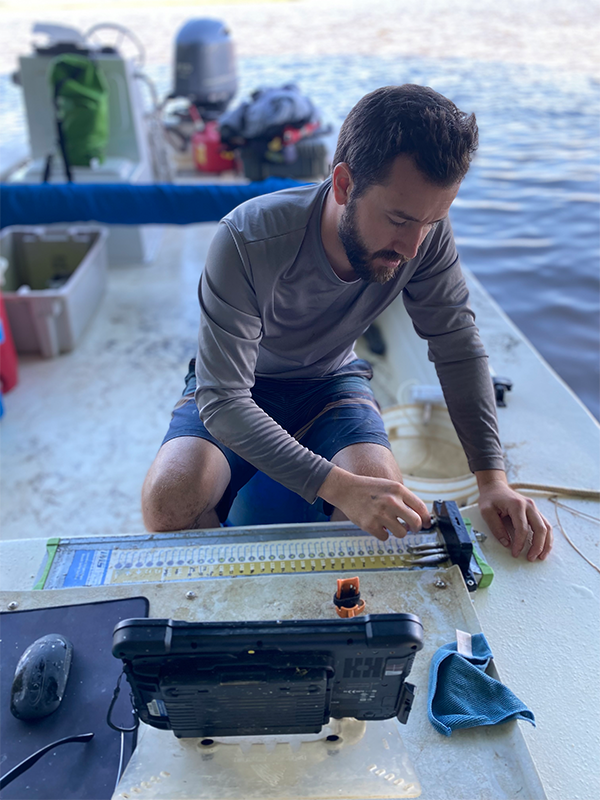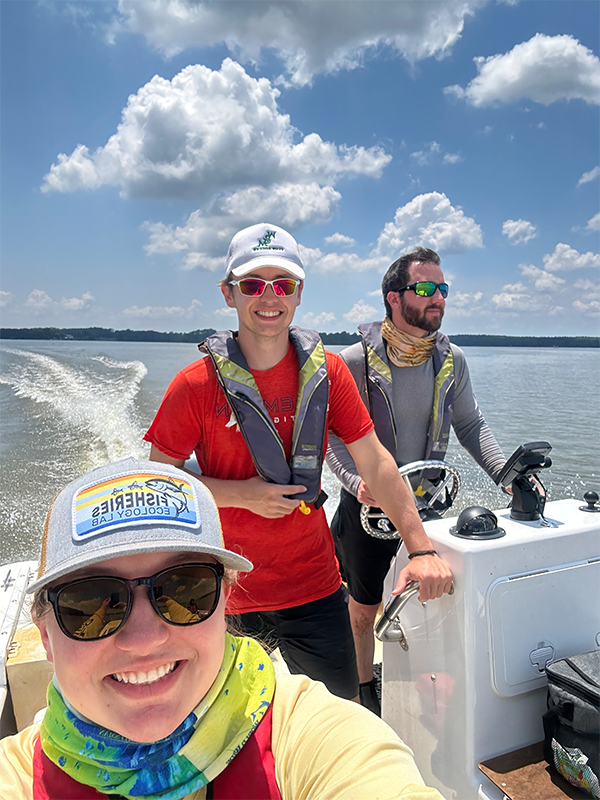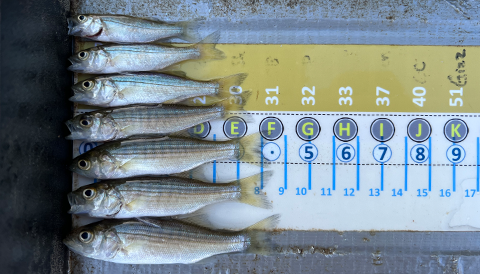An “off” year for juvenile striped bass in Virginia waters for 2023
Preliminary results from an ongoing long-term survey conducted by researchers at the Virginia Institute of Marine Science suggest a poor year class of young-of-year striped bass was produced in Virginia tributaries of the Chesapeake Bay in 2023. The 2023 year class represents the group of fish hatched this spring that will grow to fishable sizes in three to four years.
The VIMS Juvenile Striped Bass Seine Survey recorded a mean value of 4.26 fish per seine haul in the Virginia portion of the Chesapeake Bay; this value is called a recruitment index by scientists. The 2023 value is significantly lower than the historic average of 7.77 fish per seine haul and is a notable decrease in annual recruitment compared with recent years in which catches of striped bass were rated average or above average.
Poor recruitment during 2023 is consistent with patterns observed by the long-term monitoring program. Since the lifting of the striped bass fishing moratorium in 1990, single years of low recruitment have occurred approximately every ten years in Virginia waters, the last occurring in 2012 (Figure 1). However, striped bass recruitment can vary considerably from year to year. Poor recruitment in 2012 was followed by 10 years of average to above-average recruitment. In this way, striped bass populations, and the fisheries they support, are stabilized by strong year classes which mitigate the effect of less productive years.
Striped bass spawning biomass, the adult stock which returns to spawn each spring, is traditionally dominated by a few strong year classes. For instance, striped bass recovery in the early 1990s was partially attributed to a few strong year-classes produced in the late 1980s. Therefore, a single year of poor recruitment, such as observed this year, can be weathered by the previous year’s high production. If three continuous years of poor recruitment are documented, management actions will be triggered to identify and address issues of striped bass spawning success.
Striped bass play an important role as a top predator in the Chesapeake Bay ecosystem and are a valuable resource for commercial and recreational anglers. Professor Mary Fabrizio, who directs the Juvenile Striped Bass Seine Survey at VIMS, notes that the economic and ecological value of striped bass lends significant interest to the year-to-year status of their population. "By estimating the relative number of young-of-year striped bass," she says, "our survey provides an important measure of annual and long-term trends in the Bay's striped bass population."

The VIMS survey samples 18 index sites in the Rappahannock, York, and James River watersheds. Biologists sample each site 5 times from mid-June to early September, deploying a 100-foot seine net from the shore. Each fish captured in the net is counted, measured, and returned to the river. These young striped bass usually measure between 1.5 and 4 inches. Survey scientists in Virginia measured 1,025 juvenile striped bass in 2023. VIMS has been conducting the survey annually since 1967 for the Virginia Marine Resources Commission.
The striped bass population in Chesapeake Bay has rebounded from historic lows in the late 1970s and early 1980s after fishing bans were enacted in Delaware, Maryland, and Virginia in the mid- to late-1980s. Since then, the population increased to the point that striped bass in the Bay and elsewhere were considered recovered. In 2019, scientists determined that the striped bass population was overfished and that mortality due to fishing was higher than what the population can withstand in the long term. The Atlantic striped bass stock remains overfished but are no longer experiencing overfishing based on the 2022 Atlantic Striped Bass stock assessment update. Monitoring of juvenile striped bass recruitment will continue next year to provide managers with crucial information to sustainably manage this important species.
The Maryland Department of Natural Resources (MDNR) conducts a similar survey within Maryland’s portion of the Chesapeake Bay. In 2023, MDNR also recorded a below-average year class. Sometimes Maryland and Virginia record similar or even opposing indices and the causes of such differences vary annually and can be difficult to determine. However, striped bass populations are supported by strong year classes that can mitigate the impact of less productive years.
For more information about the VIMS Juvenile Striped Bass Seine Survey, visit the VIMS survey webpage.
For more information about the MDNR seine survey, visit the MDNR survey webpage. For more information about current striped bass management and regulation, visit the Atlantic States Marine Fisheries Commission webpage.

